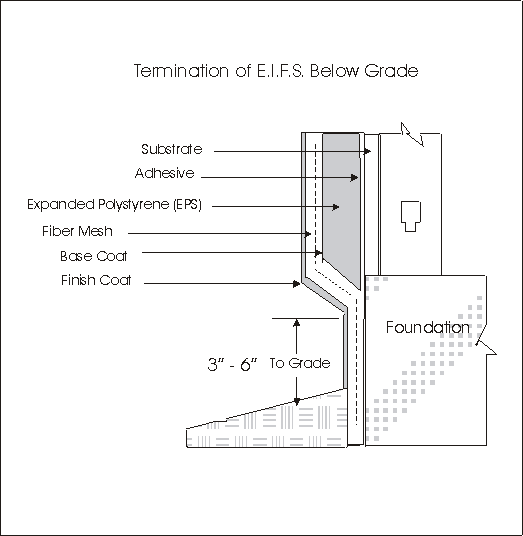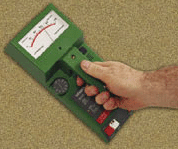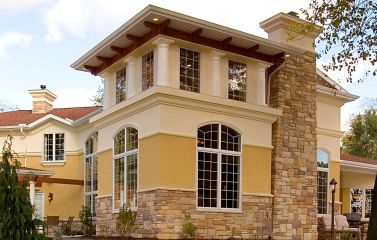Synthetic Stucco vs Hardcoat Stucco
Synthetic Stucco, also known as Exterior Insulated Finish System, or EIFS, was first used in Europe after the end of World War II to repair all the damaged commercial buildings in Berlin.
Synthetic stucco eventually came over to the United States and was initially used on commercial properties. Eventually, builders began using synthetic stucco on residential properties.
Synthetic Stucco can be very beautiful as well as low maintenance, durable and energy efficient. It really does not deserve the complete black eye reputation it has.
There are primarily two types of stucco in use today, Synthetic and Hardcoat.

What is Synthetic Stucco?
Synthetic stucco installation begins with attaching Expanded Polystyrene (EPS) foam panels to the plywood sheathing of the structure. A fiberglass or wire mesh is then attached to the foam. The stucco, which is an acrylic, rubber based product, is applied in one or two coats, and the final product is typically 1/16th to 1/8th inch thick.
What is Hardcoat Stucco?
Hardcoat stucco is instead installed over wood strips, known as lath, or over metal lath and does not use the foam underlayment. Hardcoat Stucco is usually 3/4″ to 1 inch thick and therefore will feel more solid (thicker) and give a solid thump if you tap on it.
Why is Synthetic Stucco Used?
Synthetic Stucco became popular because of the ease and low cost to install. Additionally, the EPS foam installed behind the stucco provides insulation. The finish color is consistent throughout the stucco, making it very low maintenance. Architects like the product because they can create interesting design features and details, adding to the curb appeal of homes.
What are the potential problems with Synthetic Stucco?
Synthetic stucco was meant to be a barrier system, meaning it was not intended for water to get behind the stucco. If this occurs, most commonly due to a flashing issue, the water can get trapped, potentially causing wood rot to the wood framing and sheathing of the home.
In addition to the moisture related problems, if the foam behind the stucco is incorrectly installed at or below grade, it can be conducive to termite infestation.
As a result of problems discovered with synthetic stucco homes, inspection and testing protocols were created. The Exterior Design Institute, located in Virginia, was formed to educate and train independent, third party, EIFS inspectors.
The Specialized Synthetic Stucco Inspection
A Specialized Stucco Inspection is a combination of a visual inspection, and moisture detection using moisture meters designed specifically for this purpose.
The visual inspection evaluates the installation of the stucco and flashings. The windows and doors, porches and decks, and utility penetrations are carefully examined. The stucco is also checked for any signs of damage, cracking, and delamination. The inspector will also determine if the stucco system terminates above or below grade.
 The home is then scanned for moisture using a non-invasive meter, typically a electronic moisture scanner. This meter can scan behind the stucco for any signs of moisture. Suspect areas are then tested further by drilling small holes and using a probe meter.
The home is then scanned for moisture using a non-invasive meter, typically a electronic moisture scanner. This meter can scan behind the stucco for any signs of moisture. Suspect areas are then tested further by drilling small holes and using a probe meter.
The Solution
If you or your Home Inspector suspects there are issues, you can order the Specialized Stucco Inspection. Depending on the outcome of this, you can have the homeowner repair any issues. You can also purchase a long-term warranty, or bond, protecting you from future issues.


